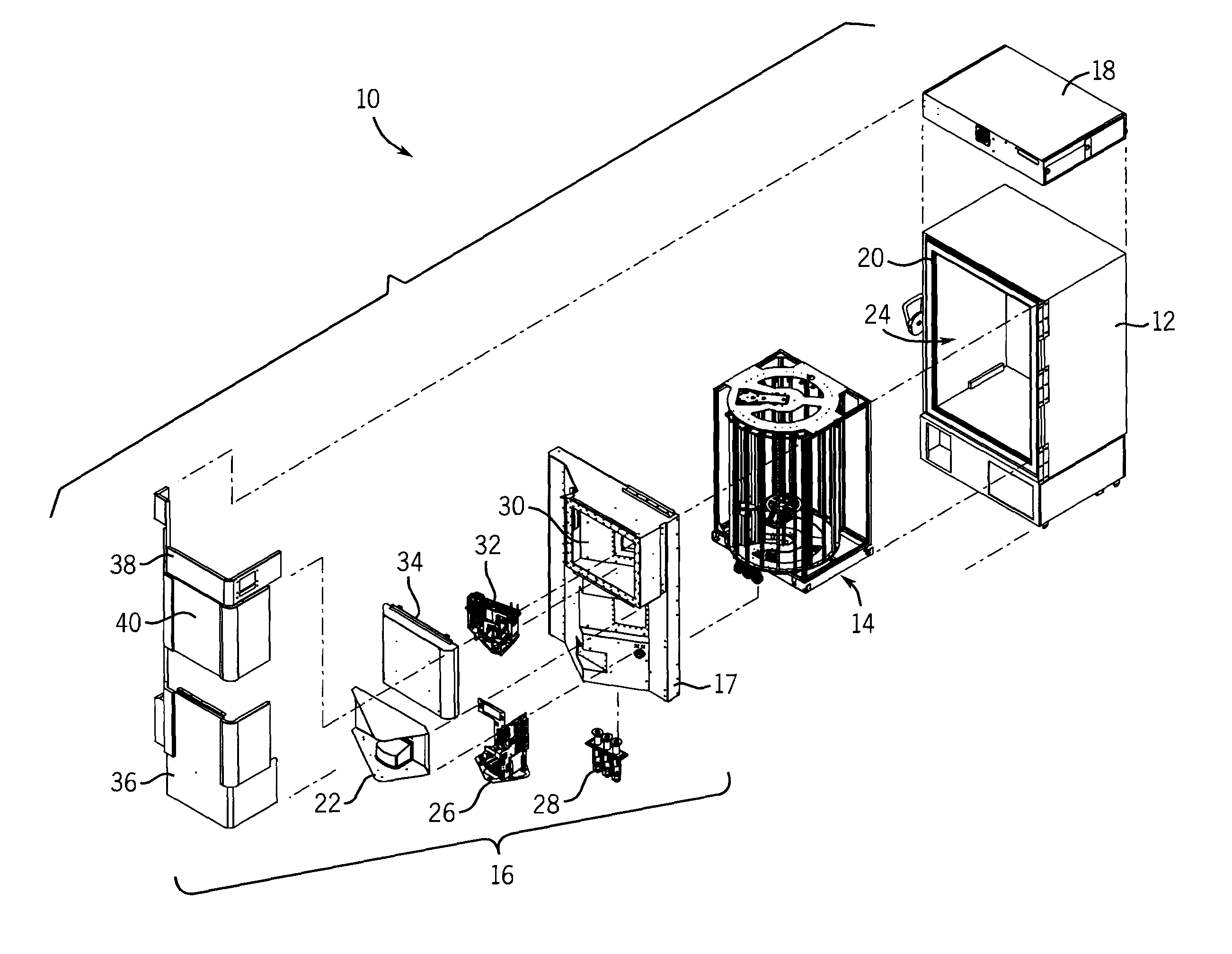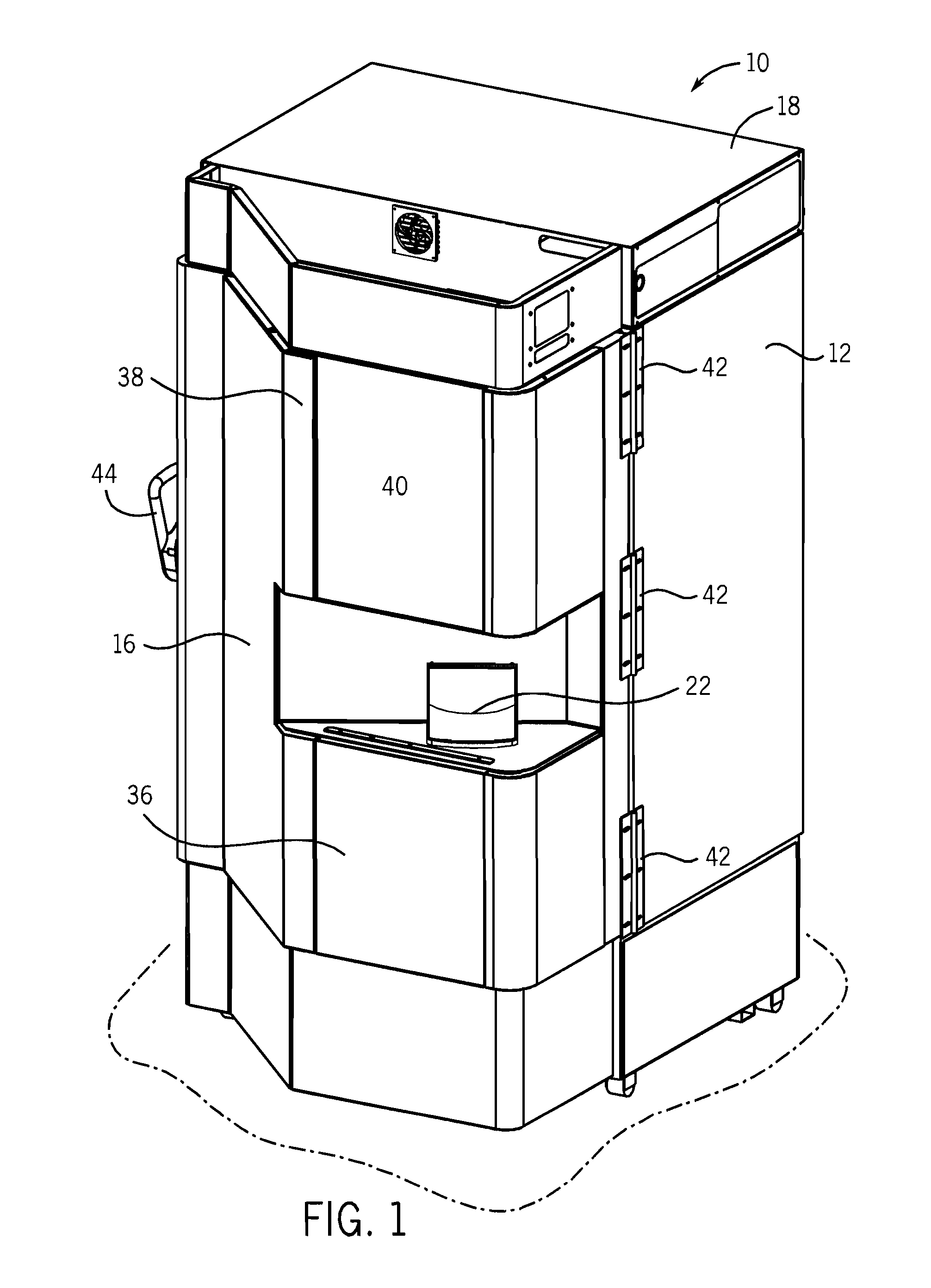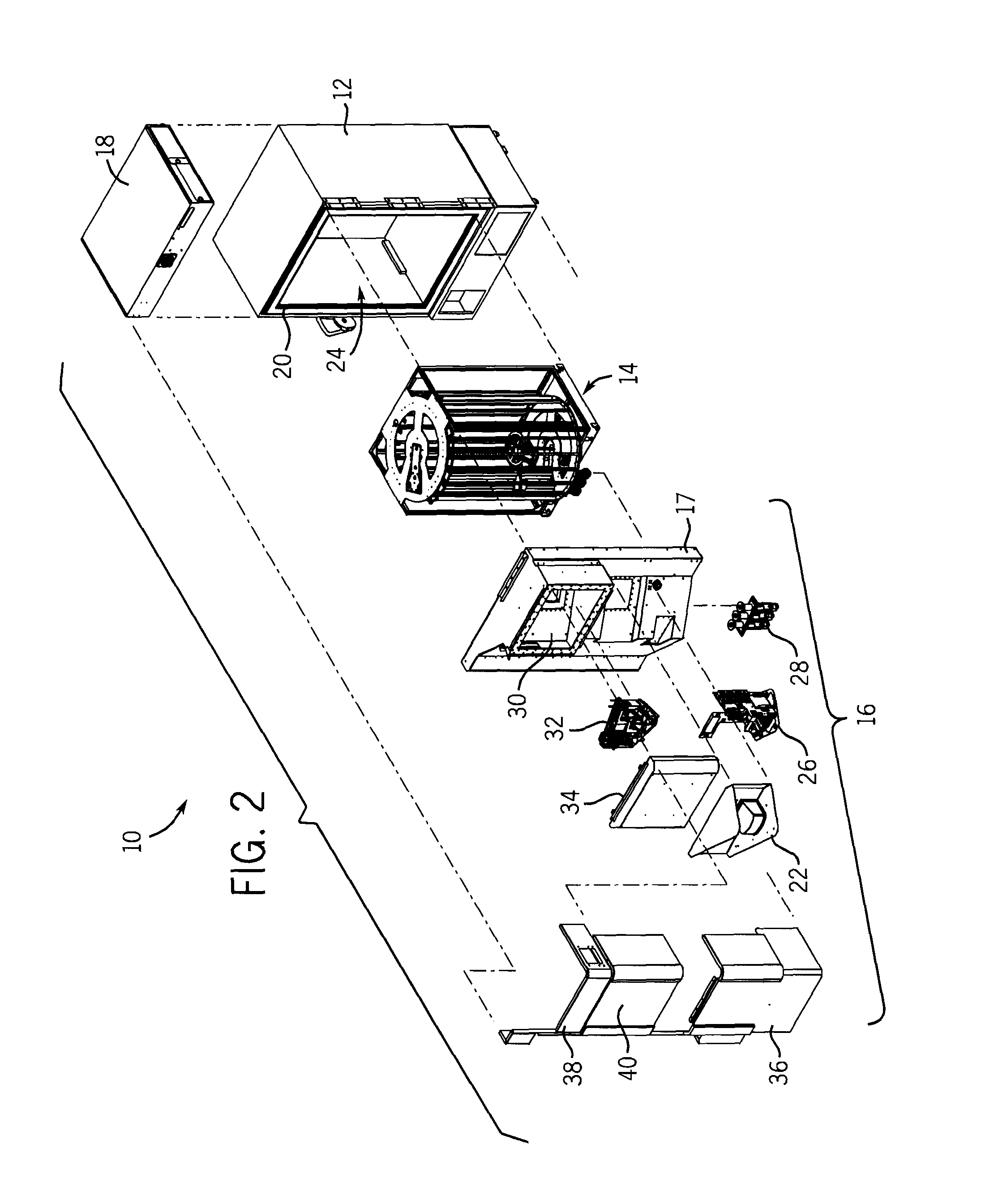Automated storage and retrieval system for storing biological or chemical samples at ultra-low temperatures
a biological or chemical sample and automatic storage technology, applied in the field of automatic storage and retrieval systems for ultra-low temperature freezers, can solve the problems of system, robot and other components of the retrieval mechanism, system malfunction, and normal time-consuming defrosting procedure, so as to reduce the relative humidity within the compartment, improve reliability, and reduce the risk of moisture flow
- Summary
- Abstract
- Description
- Claims
- Application Information
AI Technical Summary
Benefits of technology
Problems solved by technology
Method used
Image
Examples
Embodiment Construction
[0031]The Figures illustrate various aspects of a preferred embodiment of the invention. Referring to FIGS. 1 and 2, an automated storage and retrieval system 10 is configured to store sample storage containers, such as microtiter plates, racks for holding sealed storage tubes, or reservoirs at ultra-low temperatures. As mentioned, the system 10 is preferably designed to store SBS footprint compatible storage containers. The system 10 generally comprises a freezer body 12 for a standard ultra-low temperature freezer, an internal storage rack and robot assembly 14, a custom insulated door 16, and an electrical box 18. The preferred freezer body 12 is an upright −86° C. freezer body, purchased from Thermo Scientific, the Forma 907 Series, which is designed for ultra-low temperature storage for pharmaceutical, biotech and blood bank applications. These commercially available freezers typically come with installed racks, although these racks are not used in the present invention. In the...
PUM
 Login to View More
Login to View More Abstract
Description
Claims
Application Information
 Login to View More
Login to View More - R&D
- Intellectual Property
- Life Sciences
- Materials
- Tech Scout
- Unparalleled Data Quality
- Higher Quality Content
- 60% Fewer Hallucinations
Browse by: Latest US Patents, China's latest patents, Technical Efficacy Thesaurus, Application Domain, Technology Topic, Popular Technical Reports.
© 2025 PatSnap. All rights reserved.Legal|Privacy policy|Modern Slavery Act Transparency Statement|Sitemap|About US| Contact US: help@patsnap.com



